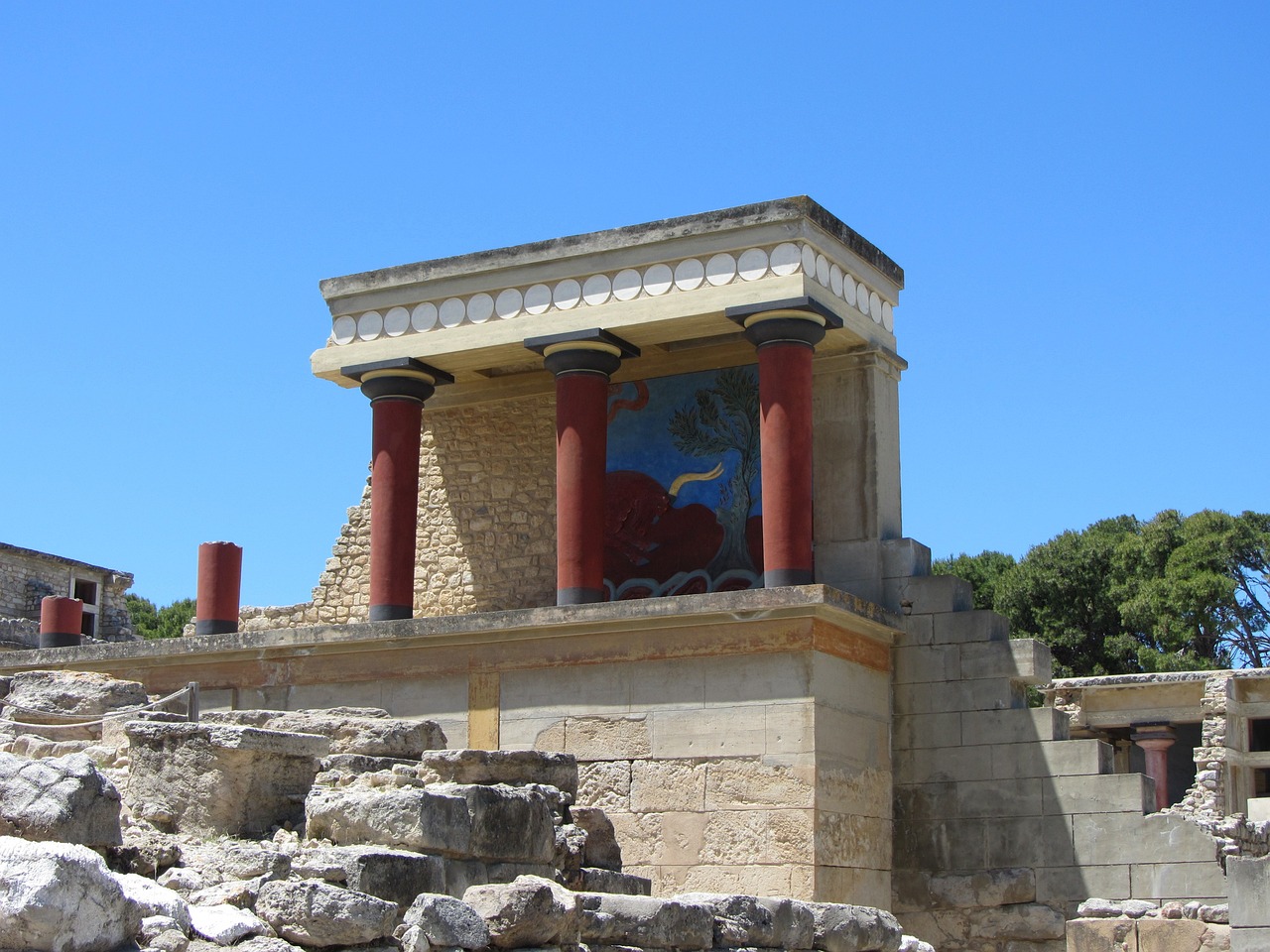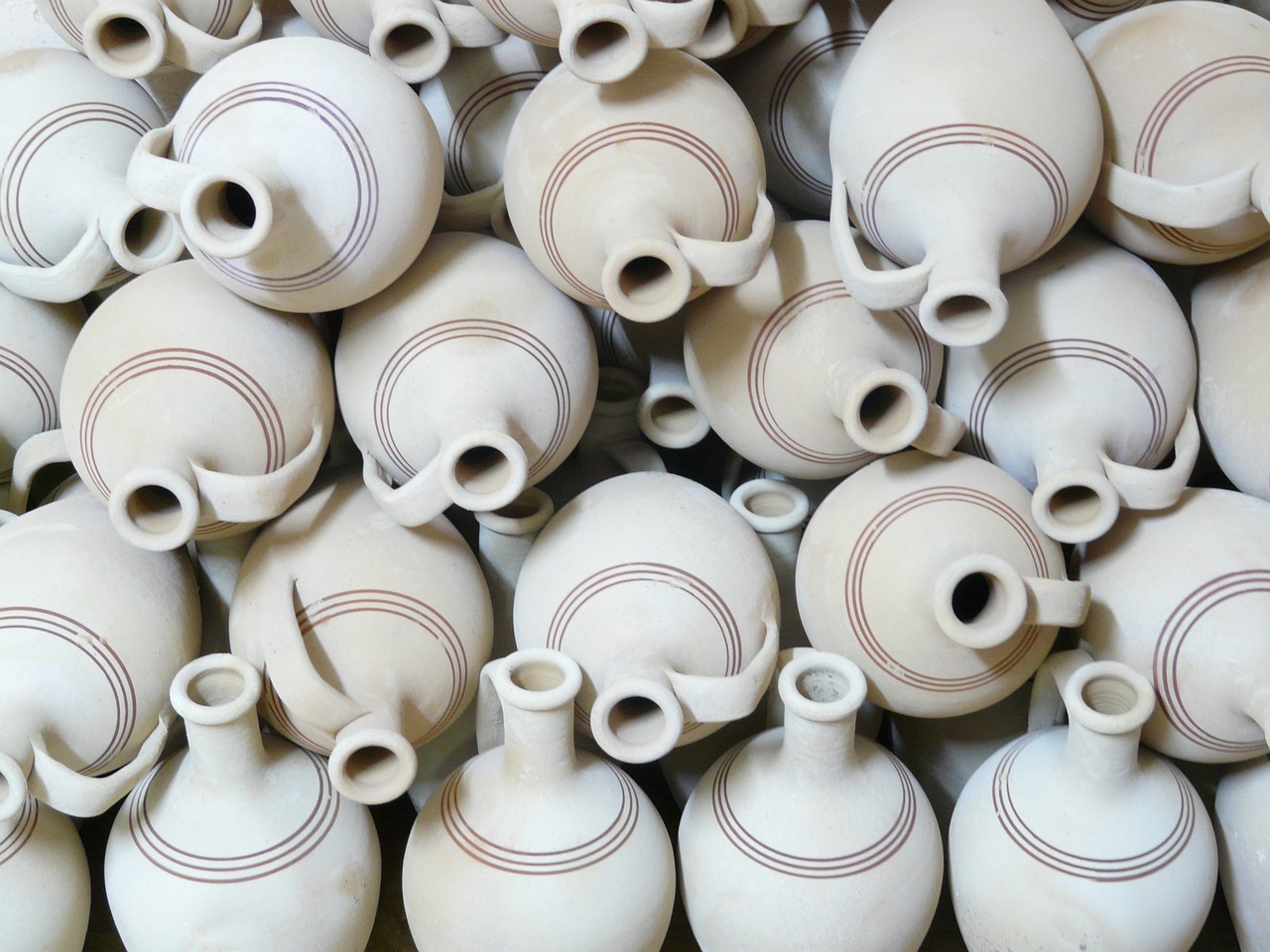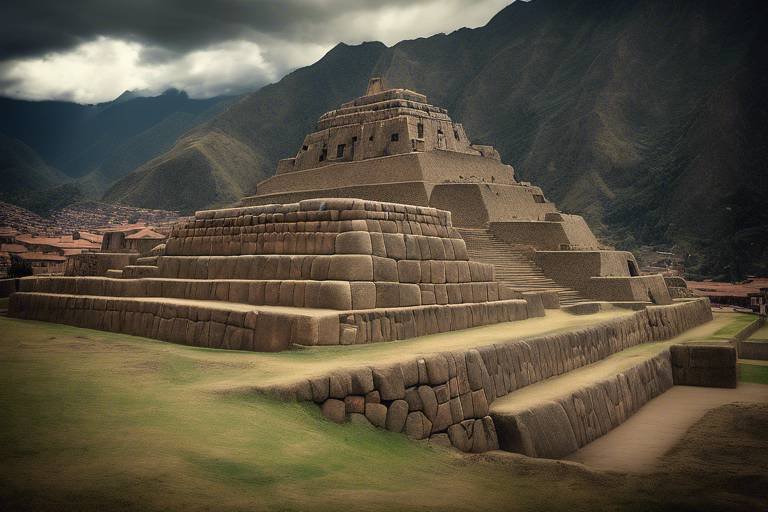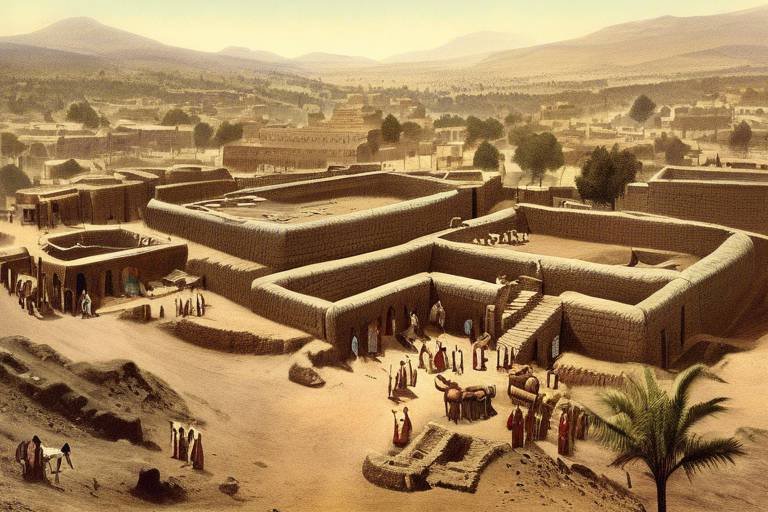The Secrets of the Minoan Civilization's Art
When delving into the mesmerizing world of Minoan art, one cannot help but be captivated by the enigmatic beauty and profound symbolism embedded in their artistic creations. The ancient Minoan civilization, flourishing on the island of Crete during the Bronze Age, left behind a rich legacy of art that continues to intrigue and inspire us today.
From the vibrant frescoes adorning the walls of the Palace of Knossos to the intricate designs of their pottery and the evocative sculptures depicting scenes of daily life and religious rituals, Minoan art offers a glimpse into a sophisticated and culturally rich society.
What sets Minoan art apart is not just its aesthetic appeal but also the deeper meanings and messages woven into each artwork. The motifs, colors, and themes found in Minoan art are not merely decorative but carry profound symbolic significance, reflecting the Minoans' religious beliefs, social structures, and worldview.
One of the most iconic aspects of Minoan art is the Palace of Knossos frescoes, which provide a window into the Minoan aesthetic sensibility and narrative traditions. These elaborate frescoes depict a variety of subjects, from nature scenes and religious ceremonies to mythical creatures, offering a visual feast for the eyes and a treasure trove of cultural insights.
Moreover, Minoan pottery stands out for its exquisite craftsmanship and innovative designs, serving both utilitarian and ritualistic purposes in Minoan society. The elegant shapes, vibrant colors, and intricate patterns found on Minoan pottery reflect a society that valued artistry and creativity in everyday objects.
When it comes to Minoan sculpture, the iconic Snake Goddess figurines and the Bull-Leaping fresco are prime examples of the Minoans' fascination with movement, nature, and symbolism. These sculptures not only showcase the technical skill of Minoan artists but also offer a glimpse into the spiritual and mythological beliefs of the civilization.
As we unravel the secrets of Minoan art, we uncover not just artistic achievements but also a profound cultural legacy that has influenced subsequent civilizations throughout history. From ancient Greece to modern artists, the allure of Minoan art endures, reminding us of the timeless beauty and cultural significance of this ancient civilization's artistic expressions.

History of Minoan Art
Exploring the art of the ancient Minoan civilization, known for its vibrant frescoes, pottery, and sculptures, to uncover the cultural, religious, and social significance embedded in their artistic expressions.
Embark on a journey through time to discover the captivating evolution of Minoan art. Originating in the Neolithic period, Minoan art flourished during the Bronze Age, reaching its zenith in the vibrant frescoes, intricate pottery, and symbolic sculptures that adorned the palaces and homes of Crete. Influenced by the artistic traditions of Egypt, Mesopotamia, and the Aegean world, Minoan art reflects a rich tapestry of cultural exchange and innovation.
As the Minoan civilization prospered, so did their artistic prowess, culminating in a sophisticated artistic style characterized by fluid lines, naturalistic motifs, and a harmonious blend of colors. The frescoes found in the Palace of Knossos stand as a testament to the Minoans' artistic achievements, depicting scenes of everyday life, religious ceremonies, and mythological narratives with unparalleled grace and beauty.
Through the lens of Minoan art, we can trace the cultural evolution of a civilization that valued creativity, beauty, and symbolism. From the humble beginnings of simple motifs to the grandeur of monumental frescoes, the history of Minoan art offers a glimpse into a world where art was not just a form of expression but a reflection of the Minoans' profound connection to the natural world and the divine.

Symbolism in Minoan Art
The art of the ancient Minoan civilization is a treasure trove of symbolism, with each motif and color holding deep significance beyond mere aesthetics. One of the most intriguing aspects of Minoan art is the prevalence of symbols that offer insights into their religious beliefs, societal structures, and daily life practices.
For the Minoans, art was not just a form of expression but a language through which they communicated their cultural values and spiritual beliefs. The motifs found in Minoan art, such as the bull, the double axe, and the octopus, were not merely decorative elements but symbols of power, fertility, and protection.
The vibrant colors used in Minoan frescoes and pottery were not chosen arbitrarily but carried symbolic meanings. The use of red, for example, symbolized vitality and energy, while blue was associated with the sea and the divine. These colors were not only visually striking but also conveyed deeper layers of meaning that enriched the viewer's understanding of the artwork.
Moreover, the themes depicted in Minoan art, such as nature scenes, religious ceremonies, and mythical creatures, were not mere representations but allegorical expressions of their worldview. The intricate details and hidden symbols in Minoan art invite us to decipher the layers of meaning embedded in each artwork, offering a glimpse into the rich tapestry of Minoan culture.
By unraveling the symbolism in Minoan art, we gain a deeper appreciation for the complexity and sophistication of this ancient civilization. The intricate interplay of motifs, colors, and themes in Minoan art serves as a window into the spiritual, social, and cultural world of the Minoans, allowing us to glimpse the depths of their artistic vision and creativity.

Techniques and Materials
Exploring the art of the ancient Minoan civilization, known for its vibrant frescoes, pottery, and sculptures, to uncover the cultural, religious, and social significance embedded in their artistic expressions.
Discover the evolution of Minoan art from its early forms to the peak of its sophistication during the Bronze Age, reflecting influences from Egypt, Mesopotamia, and the Aegean world.
Unravel the symbolic meanings behind the motifs, colors, and themes prevalent in Minoan art, shedding light on their religious beliefs, societal structures, and daily life practices.
Delve into the innovative techniques and materials used by Minoan artists, such as fresco painting, faience, and metalwork, showcasing their mastery and creativity in diverse mediums.
Explore the elaborate frescoes adorning the walls of the Palace of Knossos, depicting scenes of nature, ceremonies, and mythical creatures, offering insights into Minoan aesthetics and storytelling traditions.
Examine the exquisite craftsmanship of Minoan pottery, renowned for its elegant shapes, intricate designs, and vibrant colors, serving both practical and ritualistic purposes in Minoan society.
Survey the unique characteristics of Minoan sculpture, including the iconic Snake Goddess figurines and the Bull-Leaping fresco, illustrating the Minoans' fascination with nature, movement, and symbolism.
Investigate the enduring influence of Minoan art on subsequent civilizations, from ancient Greece to modern artists, highlighting the timeless appeal and cultural significance of Minoan artistic achievements.

Palace of Knossos Frescoes
The Palace of Knossos in Crete is a treasure trove of Minoan art, especially renowned for its stunning frescoes that adorn its walls. These frescoes provide a vivid glimpse into the artistic and cultural world of the Minoans, showcasing their mastery of color, form, and storytelling.
One of the most iconic frescoes found in the Palace of Knossos is the Prince of the Lilies, a striking portrayal of a young prince with lilies in his hands. This fresco not only demonstrates the Minoans' skill in capturing human figures but also hints at the significance of nature and youth in their art.
Another notable fresco is the Dolphin Fresco, depicting a vibrant underwater scene with dolphins swimming amidst swirling patterns. This artwork highlights the Minoans' connection to the sea and their fascination with marine life, showcasing a harmonious blend of realism and imagination.
The Bull-Leaping Fresco is perhaps one of the most famous Minoan artworks, showcasing a daring acrobatic feat of leaping over a bull. This dynamic and energetic fresco not only showcases the Minoans' interest in sports and athleticism but also hints at the symbolic significance of bulls in Minoan culture.
Exploring the Palace of Knossos and its mesmerizing frescoes is like stepping into a time machine that transports you to the vibrant and sophisticated world of the ancient Minoans. Each brushstroke and color choice in these frescoes holds a story waiting to be deciphered, offering a tantalizing glimpse into a civilization shrouded in mystery and artistic brilliance.

Minoan Pottery
Minoan pottery stands out as a remarkable example of artistic and functional excellence within the ancient Minoan civilization. Crafted with precision and adorned with intricate designs, Minoan pottery served both practical and ritualistic purposes in Minoan society. The elegance of the shapes, the vibrancy of the colors, and the attention to detail displayed on these vessels reflect the artistic sophistication of the Minoans.
The artisans of the Minoan civilization utilized various techniques to create their pottery, including wheel-throwing and hand-building methods. The use of motifs such as marine life, plants, and geometric patterns not only added aesthetic value but also conveyed symbolic meanings related to nature, fertility, and religious beliefs. The diversity of shapes and sizes of Minoan pottery vessels catered to different functions, from storage containers to ceremonial offerings.
One of the distinctive features of Minoan pottery is the use of a vivid color palette, including shades of red, black, white, and various earth tones. These colors were derived from natural pigments and were applied using techniques like slip painting and glazing, enhancing the visual appeal of the vessels. The artistic quality of Minoan pottery reflects the Minoans' appreciation for beauty and their skill in transforming clay into works of art.
Furthermore, the discovery of fragmented pottery pieces in archaeological sites has provided valuable insights into Minoan daily life, trade networks, and cultural practices. The intricate designs and motifs found on Minoan pottery not only serve as decorative elements but also offer clues about the social hierarchy, religious rituals, and artistic preferences of the Minoan people.

Minoan Sculpture
Minoan sculpture is a fascinating aspect of the ancient civilization's artistic expression, showcasing their unique perspective on nature, movement, and symbolism. Among the most iconic Minoan sculptures are the mesmerizing Snake Goddess figurines, depicting a mysterious deity with raised arms and a feline companion at her feet. These figurines exude a sense of power and mystique, hinting at the Minoans' deep connection to the spiritual world and their reverence for the divine.
Another renowned Minoan sculpture is the Bull-Leaping fresco, a dynamic portrayal of a daring acrobat vaulting over the back of a bull. This lively depiction captures the essence of movement and agility, reflecting the Minoans' appreciation for physical prowess and the thrill of challenging feats. The intricate details and vibrant colors of the fresco bring the scene to life, immersing the viewer in the exhilarating moment of the bull-leaping ritual.
Moreover, Minoan sculpture often incorporates animal motifs, such as dolphins, birds, and bulls, symbolizing various aspects of nature and the spiritual realm. These animal representations convey the Minoans' harmonious relationship with the natural world and their belief in the interconnectedness of all living beings. The intricate craftsmanship and symbolic significance of Minoan sculptures offer a glimpse into the rich cultural tapestry of this ancient civilization.

Legacy of Minoan Art
The legacy of Minoan art continues to captivate and inspire generations of artists and historians alike. The artistic achievements of the ancient Minoans have left an indelible mark on the cultural landscape, influencing subsequent civilizations and artistic movements throughout history.
One of the most significant aspects of the Minoan art legacy is its impact on ancient Greek art. The intricate designs, vibrant colors, and symbolic motifs found in Minoan frescoes and pottery served as a source of inspiration for Greek artists, shaping the development of classical Greek art. The Minoans' emphasis on naturalistic forms and expressive movement can be seen in the sculptures and pottery of ancient Greece, demonstrating the enduring influence of Minoan artistic conventions.
Furthermore, the legacy of Minoan art extends beyond the ancient world, influencing artists and designers in the modern era. The timeless appeal of Minoan motifs and themes has been rediscovered and reinterpreted by contemporary artists, who draw inspiration from the rich artistic heritage of the Minoan civilization. From the vibrant colors of Minoan frescoes to the elegant shapes of Minoan pottery, elements of Minoan art continue to resonate in the work of artists today.
Moreover, the legacy of Minoan art serves as a testament to the creativity and ingenuity of the Minoan people. Their mastery of various artistic techniques and materials, from fresco painting to metalwork, showcases the skill and craftsmanship of Minoan artists. By exploring the artistic achievements of the Minoan civilization, we gain a deeper appreciation for their cultural sophistication and artistic vision, highlighting the enduring legacy of Minoan art in the annals of art history.
Frequently Asked Questions
- What is the significance of Minoan art?
Minoan art holds great cultural, religious, and social significance as it provides insights into the beliefs, practices, and daily life of the ancient Minoan civilization. The vibrant frescoes, pottery, and sculptures reflect a society rich in creativity and symbolism.
- How did Minoan art evolve over time?
Minoan art evolved from its early forms to sophisticated expressions during the Bronze Age, influenced by various civilizations like Egypt, Mesopotamia, and the Aegean world. The artistry of the Minoans reflected their interactions and inspirations from diverse cultures.
- What materials and techniques did Minoan artists use?
Minoan artists employed innovative techniques such as fresco painting, faience, and metalwork, showcasing their mastery in diverse mediums. The materials they used, combined with their skillful craftsmanship, contributed to the unique aesthetic of Minoan art.
- What is the legacy of Minoan art?
The legacy of Minoan art extends beyond the ancient civilization, influencing subsequent cultures and artists throughout history. From ancient Greece to modern times, the appeal and cultural significance of Minoan art continue to resonate and inspire artistic endeavors.



















